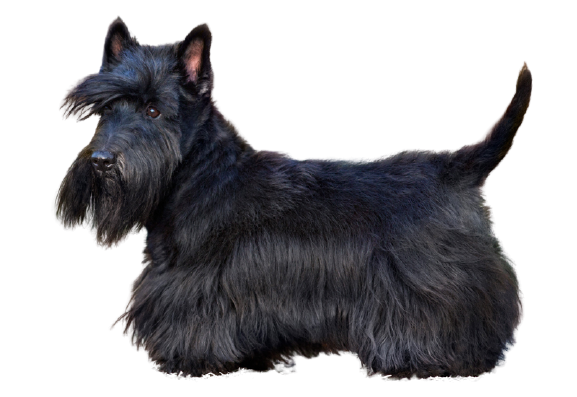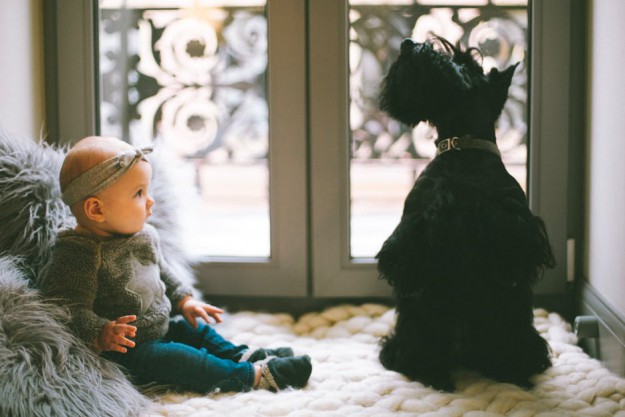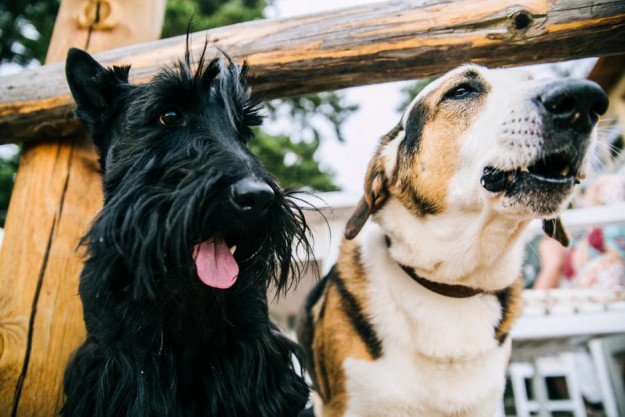
Scottish Terrier
USD $800-$1000 Price Avg.
Hunting Dogs
Group
Purebred
Breed Type
Small
Size
11-13 years
Lifespan
Breed Information
| Group | Hunting Dogs |
|---|---|
| Popularity/Rank | 58 |
| Origin | Scotland |
| Other Names | Aberdeenie, Scottie |
| Breed Type | Purebred |
| Price (Avg.) |
USD $800-$1000
How much does a Scottish Terrier cost? According to a rough estimate, you will spend between $800 to $1000 on your Scottish Terrier if you purchase it from a reputable breeder. If you select a dog with exceptional bloodlines, the price may be higher. The price might even be higher if the dog has already been trained. You'll usually pay less if you get a Scottish Terrier from a shelter. |
| Size | Small |
| Weight | 19-23 pounds (8.5-10.5 kg) |
| Height | 10-11 inches (25-28 cm) |
| Lifespan | 11-13 years |
| Recognized by |
AKC, FCI
The American Kennel Club in 1885 as a Terrier breed. And FCI in the Terriers group, in the Small sized Terriers section. |
| Purpose | vermin hunting |
| Date of Origin | 1800s |
| Ancestry | Cairn, Skye, West highland white terriers |
Appearance & Maintenance
| Coat | Wiry |
|---|---|
| Coat Colors | Black, Brindle, Red, Silver, Wheaten |
| Grooming Level | |
| Shedding Level | |
| Eye Color Possibilities | Brown |
| Nose Color Possibilities | Black |
| Coat Color Possibilities | Black, Brindle |
| Coat Length | Medium |
| Coat Density | Normal |
| Coat Texture | Wiry |
| Recommended Brushes | Comb, Nail Clipper, Scissors, Slicker Brush |
| Brushing Frequency | Weekly |
Breed Characteristics
| Temperament | Alert, Independent, Playful, Quick, Selfish, Speedy, Sportive, Vigilant |
|---|---|
| Intelligent | |
| Trainability | |
| Playfulness | |
| Sensitivity Level | |
| Affection Level | |
| Social Interaction Required | |
| Barking | |
| Watchdog Ability | |
| Territorial | |
| Biting Force | Low |
| Mouthiness | |
| Impulse to Wander or Roam | |
| Prey Drive | |
| Adaptability | |
| Tolerates Being Left Alone | |
| Fighting Dog | Not really |
Good & Friendly with
| Apartment Life Friendly | |
|---|---|
| Stranger Friendly | |
| Kid-Friendly | |
| Cat Friendly | |
| Dog Friendly | |
| Office Friendly | No |
| Senior Citizens Friendly | |
| Pet Friendly | |
| Friendly with First Time Owners | No |
| Service Dog | Not really |
| Therapy Dog | Not really |
| Detection, Sniffer or Security Dog | Not really |
| Search and Rescue Dog (SAR) | Not really |
| Boat Dog | Not really |
| Cart Pulling or Drafting Dog | Not really |
Health Elements
| Health Issues | |
|---|---|
| Health Problems | Craniomandibular Osteopathy, Patellar Luxation, Scottie Cramp, Von Willebrand's Disease |
| Hypoallergenic | Yes |
| Energy Level | |
| Exercise Required | |
| Sleeping Required | |
| Weight Gain Potential | |
| Weather & Climate | Prefers average to cold weather conditions |
| Stinkiness | Medium |
| Drooling tendency | |
| Activity Level | Moderate |
| Rec. Walk Mileage Per Week | 6 miles |
| Minutes of Activity Per Day | 30 minutes |
Food & Costing
| Avg. Daily Food | Recommended daily amount: 1 to 1.5 cups of high-quality dry food a day. |
|---|---|
| Cups Per Day | 0.8 cups |
| Daily Cost | $0.85 - $1.00 |
| Monthly Cost | $25.00 - $30.00 |
Reproducibility
| Gestation Duration | 60-64 days |
|---|---|
| How often can the Scottish Terrier have a litter? | Once a year. |
| Litter Size | 2-5 puppies (Once a year.) |
Description
The Scottish Terrier, also known as the Scottie, is a small breed of dog that originated in Scotland. It is a member of the terrier family and is known for its distinctive appearance and personality. The Scottie has a long history as a loyal companion and guard dog, and it remains popular today.
Appearance: The Scottish Terrier has a compact body with short legs and a long head. Its coat is wiry and thick, usually black or wheaten in color. It has small ears that stand erect on its head, dark eyes, and an alert expression. Its tail is usually docked to about two-thirds of its original length.
Lifespan: The average lifespan of the Scottish Terrier is 12 to 15 years.
Size: The average size of the Scottish Terrier ranges from 10 to 11 inches tall at the shoulder when fully grown.
Weight: The average weight of the Scottish Terrier ranges from 18 to 22 pounds when fully grown.
Colors: The most common colors for this breed are black, wheaten (light brown), brindle (striped), or white with black markings on its face or body.
Personality: The Scottie is an independent breed with an alert nature that makes it an excellent watchdog. It can be stubborn at times but also loves attention from its owners and will show affection in return for treats or playtime activities like fetching balls or tugging on ropes with other dogs or humans alike!
Friendliness towards other dogs/animals/children: Generally speaking, the Scottish Terrier gets along well with other animals if properly socialized from puppyhood onwards; however they may be territorial around their own kind so caution should be taken when introducing them to new canine friends! They are also friendly towards children if raised around them but may become overly protective if not given enough attention by their owners – so supervision should always be present when they’re interacting with kids!
Temperament: This breed tends to have an independent streak which can make training difficult at times; however they are intelligent dogs who respond well to positive reinforcement methods such as clicker training or reward-based systems like treats! They can also be quite vocal so early socialization classes are recommended for puppies in order to help them learn how to control their barking habits later on in life!
Health Issues & Adaptability Level: Generally speaking this breed does not suffer from any major health issues; however some individuals may develop skin allergies due to their thick coats so regular grooming sessions are recommended in order to keep these problems under control! As far as adaptability goes – this breed does best living indoors where it can receive plenty of love and attention from its owners; however they do enjoy going outside for walks too – just make sure you keep them leashed up at all times since they have strong hunting instincts which could lead them into trouble if left unchecked! Benefits Of Owning A Scottish Terrier Dog As A Pet : One great benefit of owning a Scottie as your pet is that they’re incredibly loyal companions who will stick by your side through thick and thin – no matter what life throws your way! They’re also very intelligent dogs who respond well to training methods such as clicker training which makes teaching them new tricks easy peasy lemon squeezy! Plus – these little guys love nothing more than cuddling up next you after a long day out exploring together – making them perfect lapdogs too!
History
The Scottish Terrier is a small, compact, short-legged, sturdily-built dog of good bone and substance. The head is long in proportion to the body, with a flat skull, a short muzzle and strong jaws. The teeth meet in a scissors bite. The dark eyes are small, almond shaped and set well apart. The ears are small, prick or button type. The tail is medium length and usually docked. Dewclaws may be removed. The coat is hard, wiry and dense with good undercoat. Colors include black, brindle or gray with white markings on chest and feet.
The Scottish Terrier breed almost became extinct around the early 1900s due to the popularity of other breeds such as the Poodle and the Greyhound. However, a few dedicated breeders kept the Scottish Terrier alive and eventually the breed became popular again in the United States and Europe.
The Scottish Terrier's ancestry can be traced back to the early 1800s in Scotland where they were bred as working dogs on farms and estates. They were also used for hunting vermin and rodents. In 1883, the first Scottish Terrier was registered with the Kennel Club in England and slowly but surely, the breed began to gain popularity around Europe and North America.
Today, the Scottish Terrier is still considered a rare breed but their numbers have increased thanks to dedicated breeders who have worked hard to preserve this unique dog breed.
Scottish Terrier Posts
Explore Scottish Terrier's photos, videos, activities, stories, and facts.








